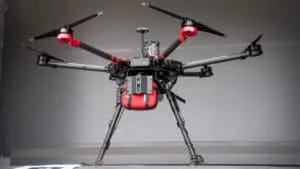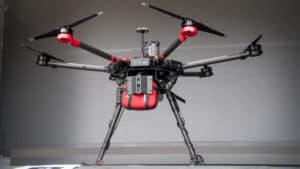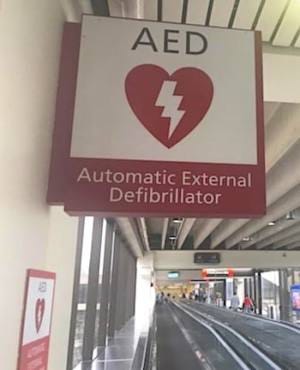Drone Delivers Life-Saving AED
And why you should travel with an AED if you have a heart condition...
Dear Mike,
I saw something recently about a drone delivering an AED to someone having a heart attack. I worry about my husband’s heart condition while we’re out camping. Is this going to be commonplace soon? Should we get an AED to keep in our RV while traveling? —Lucy R.
Dear Lucy,
Yes, I saw that press release as well. It was an amazing coordination of modern technologies that saved a man’s life. It only took 3 minutes for a drone to deliver a lightweight AED to the victim on the street, and a bystander was able to use it to save the man’s life.
Heart-Attack Patient Saved by a Defibrillator Delivering Drone
Read the full story HERE
A company from Sweden, Everdrone, makes reaching hard-to-reach areas easier with its Emergency Aerial Delivery (EMADE) service drone. The drone was developed with the Center for Resuscitation Science at Karolinska Institutet, SOS Alarm, and Region Västra Götaland.
EMADE service is designed to allow emergency dispatchers to send a drone carrying the device to a caller’s home, kickstarting the medical response process before the ambulance arrives at the location.
EMADE was put to its most difficult test ever on December 9 last year, according to Everdrone. A 71-year-old man in Trollhättan, Sweden, suffered an out-of-hospital cardiac arrest while shoveling snow.
Could this technology save your life?
While an Automated External Defibrillator (AED) definitely can save your life from a heart attack or shock/electrocution, don’t count on a drone delivering it to you in a campground just yet. The story was about the first time this combination of technologies came together in an actual emergency to help save a life.
What should I do right now?
Do you know where the nearest AED is located? If not, now is the time to find it. Hopefully, whatever campground you’re staying at will have one in the office, so confirm its location. If it doesn’t have one, then ask them why not.
Remember, if you or your partner is having a heart attack, minutes count. So you don’t want to be looking around for an AED during an emergency.
And because many campgrounds are built at remote locations, it could take longer than normal for an ambulance and EMT to arrive. To have the best chance of surviving a heart attack, the ambulance needs to respond within 10 minutes. So if your campground doesn’t have an AED, perhaps you should get your own.
Should you buy your own AED?
If you or someone who camps with you has a heart condition, I think that purchasing your own AED and traveling with it can save a life. I don’t have any suggestions for which brand and model is the best for you, so you’ll need to do your own research. But HERE’s a good place to start.
Study up
I’ve been pitching the idea of adding basic AED/CPR classes to follow my RVelectricity Seminars, but so far nobody is interested. However, that doesn’t mean you can’t learn on your own. Call your local fire company and ask if there’s any basic Compression-Only CPR and AED classes in your area. You don’t need to become certified to use an AED
And remember to get some training on how an AED works and when to use it. And ALWAYS call 9-1-1 first and give them your exact location, including the number of your campsite if you’re out in your RV.
OK, everyone. Remember that electricity is a useful and powerful force, so we all need to pay attention to safety precautions while using it.
Let’s play safe out there… Mike









The Pulspoint app is a crowd sourced database of AED locations and also can connect you with volunteer individuals in your immediate area who know CPR. It’s worth looking into and participating.